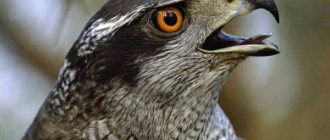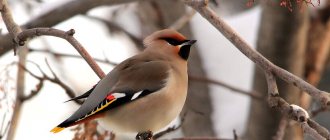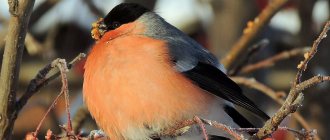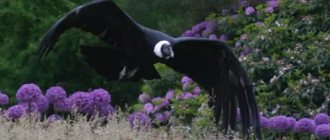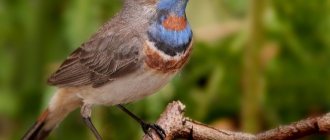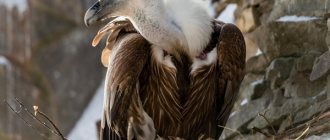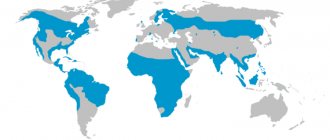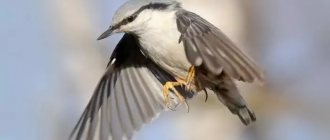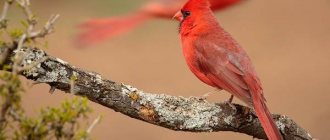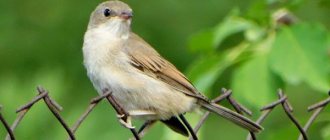- Wild animals
- >>
- Birds
The capercaillie is a majestic bird, in which one can feel strength and solidity. The beautiful color of the feathers, the raised beak, and the fluffy tail resembling a fan involuntarily make you admire the bird for a long time. This is the most noble and largest bird of the black grouse breed. Wood grouse are characterized by particular clumsiness, heavy gait, timidity and noisy flight. They are unable to fly long distances. Males have a more spectacular plumage color. You can find out more information about this wonderful bird from this article.
Origin of the species and description
Photo: Capercaillie
The species was first classified by Linnaeus under its current binomial bird name in Systema naturae in 1758. Now we have a more expanded and accurate description of the taxonomic features of the capercaillie.
Here are a few subspecies, listed from west to east:
- cantabricus (Cantabrian wood grouse) - Castroviejo, 1967: found in western Spain;
- aquitanicus - 1915: found in the Pyrenees, Spain and France;
- major - 1831: found in Central Europe (Alps and Estonia);
- rudolfi - 1912 : found in Southeastern Europe (from Bulgaria to Ukraine);
- urogallus - 1758: found in Scandinavia and Scotland;
- karelicus - found in Finland and Karelia;
- lonnbergi - found on the Kola Peninsula;
- pleskei - found in the Republic of Belarus, in the central part of Russia;
- obsoletus - found in the northern European part of Russia;
- volgensis - 1907: found in the southeastern European part of Russia;
- uralensis - 1886: found in the Urals and Western Siberia;
- parvirostris - 1896: Stone capercaillie.
The subspecies is characterized by an increase in the amount of white on the underparts of males from west to east, from almost entirely black with a few white spots below in western and central Europe to almost pure white in Siberia, where the common capercaillie occurs. In females there is much less variation.
The native Scottish population, which became extinct between 1770 and 1785, was probably a distinct subspecies, although it was never formally described. The same can be said about the extinct Irish species.
Is it possible to tame this beautiful bird?
The capercaillie can be kept at home, since this bird is unpretentious.
As already mentioned, many dangers await free birds in the form of predators, hunters, fires in forests where the bird dies. If the bird has an owner and the necessary care, it will live longer than in the wild. At home, she needs to arrange her home and build a proper diet. What to feed this beautiful bird at home? She is able to eat cucumbers, carrots, beets and other vegetables. Naturally, before using, you need to cut them into pieces.
The bird will also eat corn, buckwheat, oats and other cereals. But we must not forget that the main food for wood grouse is pine needles, grass, buds and foliage. It is necessary to alternate homemade food with what is familiar to this bird.
Thus, there is nothing difficult about keeping capercaillie. You just have to want to get this wonderful and beautiful bird.
Appearance and features
Photo: Wood grouse bird
Capercaillie are easily distinguished by size and color. The male is much larger than the hen. It is one of the most sexually dimorphic in size of living bird species, surpassed only by the larger bustard species and a select few members of the pheasant family.
Males have a length from 74 to 110 cm depending on the subspecies, a wingspan from 90 to 1.4 m, an average weight of 4.1 kg - 6.7 kg. The largest specimen recorded in captivity weighed 7.2 kg. The body feathers are dark gray to dark brown, and the chest feathers are dark metallic green with a black tint. The belly and underparts vary from black to white depending on the subspecies. The beak is white and pink, the bare skin near the eyes is distinctly red.
Video: Capercaillie
The female is much smaller, weighing about half as much. The body length of laying hens from beak to tail is approximately 54–64 cm, the wingspan is 70 cm, and the weight is 1.5–2.5 kg, with an average of 1.8 kg. The feathers on the upper parts are brown with black and silver stripes; on the underside they are lighter and bright yellow. This color is necessary for the female to camouflage herself as much as possible during the nesting period.
Interesting fact: Both sexes have webbed feet, which provide protection during the cold season. They have rows of small, elongated horny claws that provide a snowshoe effect. This led to the German surname "Rauhfußhühner", which literally translates to "rough-footed chickens". These so-called “tacks” make a clear mark in the snow. The sex of the bird is easy to distinguish by the size of the marks.
Small chicks with their mysterious coloring resemble a female; this coloring is a passive protection from predators. At the age of about three months, at the end of summer, they gradually molt, acquiring the adult plumage of roosters and hens. The eggs of different subspecies are approximately the same size and shape; they are variegated in color with brown spots.
Male and female capercaillie: main differences
The capercaillie has pronounced sexual dimorphism. Firstly, its females are much smaller in size than its males. In body length, wingspan and weight, they are inferior to males by about 1/3. Secondly, males and females have different plumage. The color of the male is dominated by black, brown and gray tones, while the females are bright and variegated, with an abundance of red, yellow and white tones in the plumage.
Where does the capercaillie live?
Photo: Female wood grouse
The capercaillie is a sedentary bird species that breeds in northern parts of Europe and Western and Central Asia in mature coniferous forests with a diverse species composition and relatively open, gently sloping structure.
At one time, wood grouse could be found throughout the taiga forests of northern and northeastern Eurasia in cold temperate latitudes and in the coniferous forest belt of the mountain ranges of warm temperate Europe. In Great Britain, the number approached zero, but was restored by individuals brought from Sweden. These birds can be found in the Swiss Alps, the Jura, the Austrian and Italian Alps. The species is completely extinct in Belgium. In Ireland it was common until the 17th century, but became extinct in the 18th.
The species is widespread and is a common bird in forest regions in the following countries:
- Norway;
- Sweden;
- Finland;
- Russia;
- Romania.
In addition, wood grouse is found in Spain, Asia Minor, the Carpathians, and Greece. From the 18th to 20th centuries, the number and range of wood grouse decreased significantly. During the Soviet era, deforestation was associated with the retreat of the capercaillie population closer to the north, and in some southern regions it disappeared completely.
In Siberia lives the stone capercaillie, which is distinguished by its mating behavior and coloration. Its habitat coincides with the distribution of larch taiga. These borders extend beyond the Arctic Circle, reaching Indigirka and Kolyma. In the east, the stone capercaillie reaches the coast of the Far Eastern seas; in the south, the border runs along the Sikhote-Alin mountains. Most of the range in the west runs along Lake Baikal and Lower Tunguska.
Now you know where the wood grouse lives. Let's see what he eats.
Why is the bird called wood grouse?
During the mating season, the male is so keen on attracting females that he becomes deaf when mating. Showing refers to a special set of sounds made by the male. The nature of the sounds is difficult to convey in words - it is a mixture of clicks and hissing. At first, the capercaillie makes double clicking sounds: tk-tk... The intervals between pairs of clicks are small. Gradually the breaks become shorter, the sound becomes a trill: tk-tk-tk-tk…. This sound range is called turning, grinding or skimming.
The male attracts capercaillie not only with vocal signals, but also with behavior: he stretches his neck, spreads his beautiful tail and wings. This peculiar singing and spectacular appearance attracts females, and they readily come to the mating meeting. However, the capercaillie is practically deaf during the mating period. Being a cautious bird in everyday life, during the mating season the male becomes careless, forgetting about safety. His many enemies, including humans, take advantage of this circumstance.
What does wood grouse eat?
Photo: Capercaillie in winter
The wood grouse is a highly specialized herbivore that feeds almost exclusively on blueberry leaves and berries, with some grasses and fresh sedge shoots in the summer. Young chicks depend on food rich in protein in the first weeks and therefore mainly hunt insects and spiders. The number of insects is greatly influenced by the weather - dry and warm conditions contribute to the rapid growth of chicks, while cold and rainy weather leads to high mortality.
The capercaillie diet consists of various types of food, including:
- tree buds;
- leaves;
- forest berries;
- shoots;
- flowers;
- seeds;
- insects;
- herbs.
In autumn, wood grouse eat larch needles. In winter, when high snow cover prevents access to ground vegetation, birds spend almost the entire day and night in the trees, feeding on spruce and pine needles, as well as beech and rowan buds.
Interesting fact: Most of the year, capercaillie droppings have a solid consistency, but after the blueberries ripen, which become dominant in the diet, the feces become shapeless and bluish-black.
To digest rough winter food, birds need pebbles: small gastroliths, which birds actively search for and swallow. Wood grouse have very muscular stomachs, so the stones function like a mill and break the spines and buds into small particles. In addition, symbiotic bacteria also help digest plant material. On short winter days, the capercaillie feeds almost constantly.
Description of the male
The king of the forest is the capercaillie bird. The male is a creature that weighs about 6 kg. Its wingspan reaches 125 cm. Its large body is covered with black feathers with an emerald tint. During the mating season, the flaunting suitor spreads a bushy tail. The wings are wide, their color is reddish and brown. The wood grouse's beak is not very long and rounded. A kind of beard grows under it - black feathers gathered in a bun. There are bright red patches of skin around the eyes. The bird's paws are powerful, with three fingers and blunt claws.
Features of character and lifestyle
Photo: Capercaillie in the forest
The capercaillie is adapted to its original habitats - old coniferous forests with a rich internal structure and dense ground vegetation. They find shelter in the crowns of young trees and use open spaces during flight. Wood grouse are not very capable fliers due to their body mass and short, rounded wings. When they take off, they make a sudden rumbling noise that scares away predators. Due to their body size and wingspan, they avoid young and dense forests during flight. During flight, they often rest using short gliding phases. Their feathers make a whistling sound.
Females, especially brood hens with young chicks, require resources: food plants, small insects for the chicks, covered with dense young trees or tall plants, old trees with horizontal branches for sleeping. These criteria best correspond to old forest stands with spruce and pine. Birds lead a mostly sedentary lifestyle, but can move from the mountains to the valleys, making seasonal migrations.
The capercaillie is a cautious bird with good hearing and vision. He can be aggressive if he sees an unfamiliar animal nearby. Bird gathering places rarely change. Mostly prefers solitude; crowds of birds are not for them. In the morning and evening they stay awake in search of food. During the day they rest in the trees. In winter, in very cold weather, a capercaillie can hide in the snow from the frost and stay there for a couple of days.
Interesting facts about the bird
- In the 18th and 19th centuries, wood grouse were a favorite bird for sport and commercial hunting. Males were always hunted in the spring, during mating, when the birds lose their vigilance. During his song, a displaying male capercaillie throws his head back, rolls his eyes, puffs up, opens his tail and lowers his wings. At the same time, he does not hear or see anything around him. It even happened that the bird was not afraid of the first shot and did not fly away if the hunter missed, letting him get very close to him.
- Both in the wild and in captivity, wood grouse can give birth to common offspring with black grouse, which are called “mezhnyak”.
- In winter, wood grouse live in flocks and mainly gather on tree branches. However, in severe frosts, birds can hide in the snow, falling into it directly from a tree. Wood grouse then make a nesting chamber in the snow, in which they remain constantly, flying out only to feed.
Social structure and reproduction
Photo: Great wood grouse
The capercaillie breeding season depends on spring weather and vegetation development, but generally this period begins from March to April and lasts until May or June. But some species can breed in summer, autumn and even winter. Three-quarters of the breeding season involves courtship—simply territorial competition between neighboring males.
The male inspects himself with tail feathers raised and flared, neck straight, beak pointing upward, wings extended and lowered, and begins his typical aria to impress the females. Shocking is a series of double clicks, similar to a falling ping-pong ball, that gradually intensify to a popping sound, similar to a champagne cork, followed by a grinding sound.
Towards the end of the courtship season, females arrive on the site. Males continue to display on the ground: this is the main courtship season. The male flies into open space nearby and continues his display. The female crouches and makes a sound when she is ready to mate. Wood grouse are polygamous birds and if there is more than one contender, the alpha male wins and has sexual intercourse with the females.
About three days after copulation, the female begins to lay eggs. After 10 days the masonry is filled. The average clutch size is eight eggs, but can be as many as 12. Incubation lasts 26–28 days depending on weather and altitude.
Interesting fact: At the beginning of the incubation period, females are very sensitive to noise and quickly leave the nest. Before hatching, they are more diligent and remain in place despite the danger, bending down to their nest, which is usually hidden under the low branches of a young tree.
All eggs hatch almost simultaneously, after which the female and chicks leave the nest, where they are most vulnerable. When hatching, the chicks are completely covered in downy feathers, but cannot maintain their body temperature, which is 41° C. In cold and rainy weather, the chicks are warmed by the female every few minutes and throughout the night.
The chicks search for food on their own and hunt mainly for insects. They grow quickly and most of the energy consumed is converted into muscle. At the age of 3-4 weeks, the chicks perform their first short flights. From this time on, they begin to sleep in trees.
Breeding at home
In general, the capercaillie is a wild bird. However, with due diligence, it is quite possible to keep them in a farmstead and even produce offspring - quite abundant ones, I must say.
Cage dimensions
Of course, it all starts with choosing suitable housing.
It is unwise to keep wood grouse alone - it is much better to form a small flock. The optimal choice would be one male for two to four females. It is advisable to provide them with a spacious cage or even an aviary. The minimum height is 2 meters so that the birds feel comfortable and can fly. It is desirable that the size be 1.5×1.5 meters or even more. When making a cage, it is best to use a mesh with a small mesh - about 2x5 cm.
Important! It is advisable to cover the ceiling of the cage with thick fabric so that the birds do not get hurt or injured when taking off.
It is imperative to install several round bars with a diameter of at least 3-4 cm in the housing so that the birds can settle on them at night. After all, in the wild they spend the night on tree branches - the capercaillie does not feel too confident on the ground.
If you plan to keep several flocks in adjacent cages, then you need to put an opaque partition between them. One male, seeing another on his territory, may well rush to attack and get hurt on the net.
Breeding
Reproduction in wood grouse usually begins in March. By this time, the males occupy a suitable place on a hill and begin to display, and their female companions respond with inviting clucks.
Usually there are no special difficulties here - you need to put several nests in the cage (according to the number of females), into which you can put a chicken egg - this will speed up the process of laying eggs. In general, the birds themselves can do everything perfectly. The main task of man is not to interfere with the natural process.
A capercaillie nest can contain up to one and a half dozen eggs
Females lay 6-16 eggs (depending on size, age and diet), after which they begin to incubate them. Usually the process takes 25-28 days.
Caring for chicks
The chicks emerge from the eggs weak and naked, but, like chickens, they are covered with down after a few hours, as soon as they dry out. Therefore, it is best to entrust the care of the mother - in this case, about 80-95% of the chicks survive.
For reference! Some farmers prefer to use chickens or even turkeys to hatch capercaillie, but then the chance of successful rearing is much lower - no more than 60%.
You can also use an incubator, but in this case, the first week of the chicks’ life will have to be spent almost all of their time caring for them. For example, you need to build or purchase a ready-made brooder - the temperature here should not be lower than +20 degrees Celsius, and preferably +25..+28. They will also have to be fed and watered manually, since there is no mother nearby to teach them everything.
Nutritional Features
Choosing the right diet for adult birds can cause a lot of difficulties even for an experienced poultry farmer. Of course, collecting a huge number of buds to feed even half a dozen birds is a very difficult task. And all existing mixtures and feed intended for chickens, quails, ducks or geese are completely unsuitable, since they have a different composition. Therefore, you will have to prepare the food yourself.
Each day, each bird should receive:
- 80-100 grams of corn, wheat and oats,
- 150 grams of carrots and fodder beets (preferably chopped),
- 200 grams of pine or spruce needles,
- 50 grams of blueberry shoots.
If there are no problems with grains and vegetables, then you will have to work hard with pine needles, and even more so with blueberry shoots. And that's not the hardest part! There are even more problems with chicks.
Attention! Before the breeding season, it is necessary to add a source of calcium to the birds’ diet - chalk, eggshells or shell rock will do.
For the first two weeks, they need to be fed hard-boiled chicken eggs - chopped and mixed with small insects (caterpillars, earthworms and mealworms are suitable).
From half a month to one and a half months you will have to make a more complex mixture. It should include: rice or millet porridge, omelette, steamed wheat, low-fat cottage cheese, green onions, dill, fish oil, yeast, clover, chopped cabbage and carrots, as well as fish and meat. And of course, we must not forget about living insects.
Capercaillie with chicks
In the period from 6 to 8 weeks, the diet remains the same (you can exclude insects if there is a problem with their prey), but it is also advisable to enrich it with cranberries - a handful for each bird.
Finally, from 2 to 3 months of age, the fry can be given the same diet, but flavored with aspen leaves.
Only from 3 months they are transferred to adult food.
Natural enemies of wood grouse
Photo: Wood grouse bird
Known predators of wood grouse are the common lynx (L. lynx) and the gray wolf (Canis lupus). Although they prefer slightly larger prey. In addition, there are a number of predators that prefer to take capercaillie eggs and chicks, but can also attack adult individuals if they manage to successfully ambush wary birds.
This category of predators includes:
- pine martens (M. martes);
- stone martens (M. foina);
- brown bears (Ursus arctos);
- wild boars (Sus scrofa);
- red foxes (Vulpes vulpes).
In Sweden, western capercaillie are the main prey of the golden eagle (Aquila chrysaetos). In addition, wood grouse are often attacked by the goshawk (Accipiter gentilis). It attacks chicks more often, but it happens that adults also become victims. The eagle owl (Bubo bubo) sometimes catches capercaillie of any age and size. The white-tailed eagle (H. albicilla) prefers to hunt waterfowl, but it is noted that it has been spotted hunting wood grouse near the White Sea.
However, the main predator for wood grouse is and remains man. This is a traditional game bird that was and is hunted with guns and dogs throughout Europe and Asia. This includes sport hunting and hunting for food. In Russia (before 1917), wood grouse were brought in large quantities to capital markets, and even larger quantities were consumed locally. Since hunting is now restricted in many countries, sport hunting has become a tourism resource, especially in Central European countries.
Characteristic
The common capercaillie has a strongly rounded tail . The size of the male’s body can be more than 100 cm, the amplitude of the wings is almost one and a half meters. Weight approximately 4-6 kg. The color of these birds is incredibly beautiful. The head and neck of the male are black, the back of the neck is brown with black spots. The back is black with brown spots. The craw is black and green, the chest is green, the lower part of the body is black and white. The tail is black with white spots, brown wings, white and pink beak. Its legs are almost completely covered in feathers.
Females, of course, are inferior in parameters to males. The female weighs approximately 2 kg. Its color is quite variegated and similar to the shades of the female black grouse. The neck, fold of the wings, and upper chest are red-orange. The companion of the wood grouse is called wood grouse, capercaillie or karlukha.
Habitat
Birds live in various types of forests , mainly in Eurasia. They leave the forest quite rarely and choose the most dense places there.
Previously, these beautiful birds lived in almost every forest in Eurasia. However, recently they have begun to disappear in some places. Once upon a time these birds completely disappeared from Great Britain, but then they were brought there from Sweden.
It is almost impossible to meet a capercaillie in the Russian expanses. This is due to the destruction of forests. Wood grouse live closer to the northern parts of our homeland.
This bird can be seen in:
- Greece,
- Sweden,
- England,
- Spain,
- Alps,
- Asia Minor,
- Carpathians.
Reproduction
live away from each other until marriage The mating season begins in spring. Males begin to compete with each other, spread their tails, and make flowing and whirring sounds. The females watch this and, after the competition is over, mate with the winner. It often happens that there are fights between males for a female, which can end sadly for one of them.
The female usually builds a nest on the ground near trees. To do this, dig a small hole and lay moss and grass on the bottom. Females lay from 5 to 16 eggs. The eggs are yellow with dark spots. Hatching lasts no more than 28 days. After 28 days, the chicks are hatched and are covered with brown down and dark spots. A few hours later they already leave the nest and, after 10 days, learn to fly. Only the female incubates the eggs and protects the chicks; the male does not take any part in this.
Wood grouse grow slowly ; from the first days of life they feed on larvae and small stones. Pebbles are needed to keep the capercaillie's stomach in order, since in winter the food is very coarse and hard. If the bird does not pick up these pebbles in time, it will die.
Description of behavior
During the winter cold, birds bury themselves in the snow.
They can sit in the snow for several days. It is due to snow and subcutaneous fat that they are saved from severe frosts. In winter, they gather in small flocks; females, most often, separate from males. During breeding, males always gather to compete with each other in only one place, which is called a lek. Males love to sing endlessly . While singing, they forget about everything and even go deaf, which is to the advantage of hunters. But during the mating season, wood grouse lose not only their hearing, but also their vision. The companions of wood grouse can mate with male black grouse, after which infertile chicks are born.
In the summer, wood grouse molt and fly away into very dense forest areas. At this stage, they have rather strange behavior. They raise and lower their tail and head, and also manage to move along the branch.
These birds simply adore mossy swamps , in which they forage for various berries. The flight of wood grouse is accompanied by a strong noise of the wings. Basically, they fly over short distances. And when flying it does not rise above the trees.
Wood grouse spend the daytime on the ground, and at night, in turn, sleep on tree branches. When seeing animals, it can show its aggressive behavior. Before and after the mating season, wood grouse have excellent eyesight and sensitivity.
Eating in nature
The basis of nutrition in most of the range from mid-October to mid-May is pine needles (Pinus silvestris or P. sibirica). During the winter months, the diet consists exclusively of pine needles with a small admixture of young cones and terminal shoots. Pine needles are also consumed throughout the summer, but in very small quantities. In winter, along with pine needles, the diet includes a number of other minor components, among which juniper (twigs with needles and fruits) is most often used. In cases where birds winter in forests devoid of pine, the basis of the winter diet can be fir needles (Teplov, 1947; Dulkeit, 1964) and spruce needles (Semyonov-Tyan-Shansky, 1959; Kuzmina, 1962; Ostrovsky, 1973 ). Much less often, and mainly in the southern part of the range, the basis of winter food consists of catkins, buds and terminal shoots of deciduous trees - birch, oak, aspen, linden, alder, elm, willow (Menzbier, 1902; Kirikov, 1952; our data), and in In some cases, birch catkins make up up to 15% of the contents of the crop (Telepnev, 1972).
Spring, summer and autumn food is much more varied and depends mainly on the vegetation of the area. Among the most important food items are blueberries, Vaccinium myrtillus (stems in autumn and spring, berries in summer and autumn), blueberries, V. uliginosum (leaves and berries in summer and autumn), cotton grass, Eriophorum vaginatum (leaves and flowers in spring and in summer), sleep grass, Pulsatilla patens (inflorescences in spring). In the spring, wood grouse primarily eat fresh greens, flowers and inflorescences of herbs, shrubs and trees. A characteristic component of the summer diet is the seeds of herbaceous plants (sedge, marianberry, viviparous buckwheat), leaves and stems of horsetails and ferns, as well as leaves of various willows, aspen, birch, and alder. In summer and early autumn, animals are also eaten: slugs, spiders, various insects, among which grasshoppers, ants and sawfly larvae are preferred, sometimes even lizards. In general, the share of animal feed in the capercaillie diet is small and does not exceed 10% in July–August. Moulting birds consume animal food especially readily. In autumn, berries become the main food. In addition to them, in a number of areas, larch needles, aspen leaves, pine nuts and acorns, and in some places cereal crops, are of great importance. Storing pebbles in the fall for wood grouse is very important, and the need for the latter can even cause mass movements of birds, especially in lowland areas poor in outcrops. The maximum amount of pebbles in the stomach of a male is 71 g, a female is 27 g. The most intensive collection of pebbles begins in the second half of September, especially after the first frost, when wood grouse begin to switch to winter food, and continues until snow cover is established. At dawn, birds fly out in search of pebbles on the banks of rivers and streams, on dirt roads and quarries, on cliffs of terraces and various types of soil outcrops. During the winter, the number of gastroliths in the stomachs gradually decreases.
The diet of chicks in the first two weeks of life is dominated by various insects and spiders. Of the plant foods, blueberry flowers are the first to be eaten (in the first week of life), and starting from the second week, the share of plant food increases every day. In August, the diet of young birds is not much different from adults, mainly a slightly larger amount of insects and greens.
Habitats
The bird lives in the European part of the state, Western Siberia. Eastern Siberia, the Far East, Kamchatka, Sakhalin are inhabited by the stone capercaillie, which is slightly smaller than usual. Wood grouse live only where cedars and pines grow. In the summer, wood grouse, in particular males, gravitate to damp places: rivers, streams, swamps.
In the zone of the middle and southern taiga, wood grouse make flights over short distances, but in the zones of broad-leaved forests of the Southern Urals, in the Altai Mountains, the bird is more mobile and makes long migrations. The most remarkable are the movements of wood grouse in the northern taiga and forest-tundra zones, where moving birds form impressive flocks.
Who wrote the work “Kapalukha” and what is it about?
The work “Kapalukha” was written by the famous Russian writer V.P. Astafiev. His heartfelt, sincere stories and stories about his native nature are very popular among children and adults.
In the work “Kapalukha” the author talks in the first person about an incident that happened to him in childhood.
The author, being a junior school student, during a walk saw a capalukha bird and its nest. There were four eggs in the nest. The boys wanted to take them for themselves. But the teacher who was with them explained to the children that the eggs are future little chicks. And this big bird is their mother. She is already preparing to attack to protect her children. She had already stretched out on the ground and spread her wings, taking a threatening pose.
At this time, the main character came up with the idea of how similar this bird is to his own mother. She is also ready to protect children even at the cost of her own life.
In this article, we examined questions about what a kapalukha is, the history of the origin of this word, and also described the appearance and habitat of the bird. Kapalukha is the name given to a female capercaillie, and about the origins of this name, there are several hypotheses that point to the transfer of the name from other dialects and even from the actions of the pheasant representative himself. We found out how this name of the bird took root in everyday life and what the story of the same name by V.P. Astafieva.
Number
The number of capercaillie birds in the area depends on many factors. The disturbance of birds by mushroom pickers, berry pickers and resin gatherers during the period of reproduction and rearing of young animals leads to the fact that broods of wood grouse eat poorly and die. Nests are often destroyed by livestock grazing. In winters with little snow and low temperatures, capercaillie, unable to hide from the frost in the snow, die and their numbers drop sharply.
Many birds, especially young ones, die from predators. Heavy on takeoff and slow to pick up speed, wood grouse become easy prey for lynx, fox and even marten. Dogs and wood grouse rising from the ground catch them. Of the birds of prey, the goshawk inflicts the greatest damage on wood grouse. Birds that are sick and heavily infested with helminths are especially helpless against predators. Weakened by parasites, they endure winter worse.
The population of capercaillie is negatively affected by clear-cutting of forest areas in areas necessary for bird habitat, especially lek areas.

